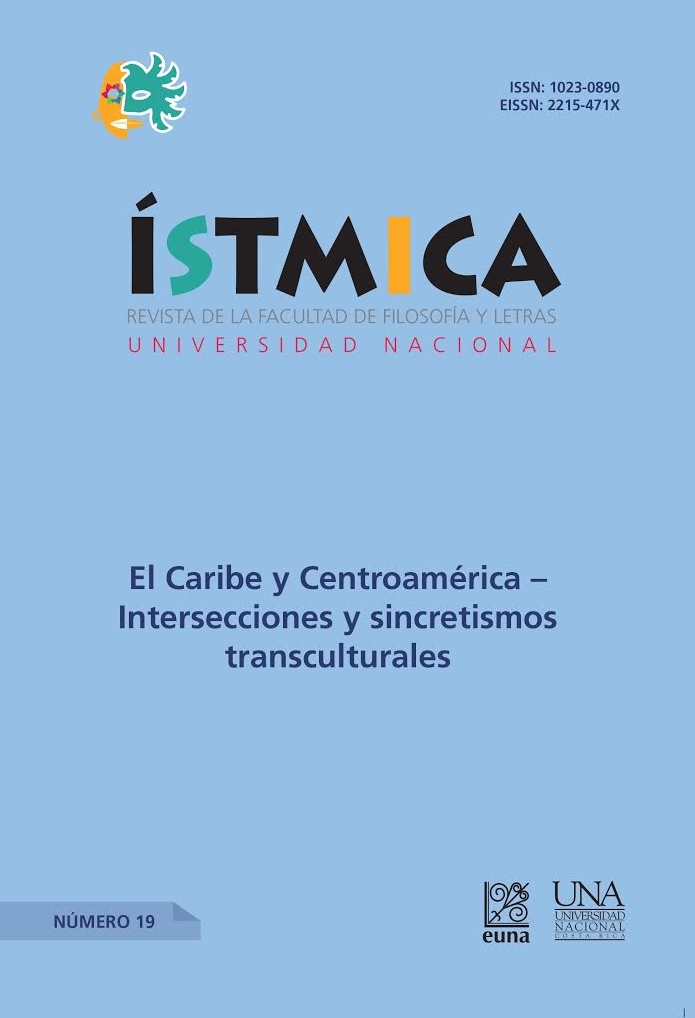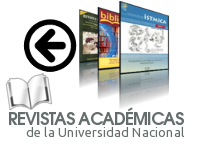Círculos viciosos: migración y violencia en la narrativa y el cine trans-centroamericanos
DOI:
https://doi.org/10.15359/istmica.19.11Keywords:
Migration, violence, Central America, desterritoriality, transnational.Abstract
Migration both within and outside the Central American isthmus has marked the lives of millions of Central Americans in the late twentieth and early twenty-first centuries. This essay analyzes two works representative of the recent narrative subgenre centered on Central American migration: the novel The Tattooed Soldier (1998) by Hector Tobar and the feature film El camino (2007) directed by Ishtar Yasin. It argues that both texts approach the migration of Central American citizens through a narrative strategy identified as “deterritorialized circular violence” in which the initial violence (national, territorialized) migrates with the protagonists of both stories to their recipient countries, transforming along the way into a transnational, deterritorialized phenomenon. Due to the transnational, circular nature of this violence, the characters are not able to escape it and rather end up in worse circumstances after their voyage to their supposed “promised land.” Through this narrative
strategy, The Tattooed Soldier and El camino make powerful commentaries on the way vulnerable Central Americans have become victims of structural, institutionalized violence that extends beyond the national territory—and whose origin and common cause is the socioeconomic inequality and precariousness that impact these individuals before and after becoming migrants.
References
Cannon, L. (1999). Official Negligence: How Rodney King and the Riots Changed Los Angeles and the LAPD. Boulder, CO: Westview Press.
Castañeda, A. “(1993). Sexual Violence in the Politics and Policies of Conquest: Amerindian Women and the Spanish Conquest of Alta California.” InA. de la Torre & B. Pesquera (Eds.), Building with Our Hands: New Directions in Chicana Studies. Berkeley, CA: University of California Press.
García Canclini, N. (1989). Culturas híbridas: Estrategias para entrar y salir de la modernidad. México, D.F.: Grijalbo.
Kotz, L. (1997). “Unofficial Stories: Documentaries by Latin American Women.” In C.Rodríguez (Ed.), LatinLooks: Images of Latinas and Latinos in the U.S. Media. Boulder, CO: Westview Press.
Miller, T. (2011, 7 de marzo). “Timeline: Guatemala’s Brutal Civil War”. Public Broadcasting Service. Recuperado de http://www.pbs.org/newshour/
updates/latin_america-jan-june11-timeline_03-07/.
Sandoval García, C. (Ed.). (2008).El mito roto: Inmigración y emigración en Costa Rica. San José, CR: Editorial de la Universidad de Costa Rica.
Tobar, H. (1998).The Tattooed Soldier. New York, NY: Penguin Books.
Yasin, I. (Directora). (2007). El Camino [DVD]. Dir. Ishtar Yasin. San José, CR: Producciones Astarté.
Downloads
Published
How to Cite
Issue
Section
License
Las personas autoras que publiquen en esta revista permiten cesión gratuita, exclusiva, de ámbito mundial de sus derechos de autoría a la Universidad Nacional (Costa Rica), conservando únicamente sus derechos morales sobre la obra publicada.
Los artículos pueden ser citados y copiados, citando a la persona autora y la fuente. Todos los artículos publicados en la Revista Ístmica están protegidos bajo una Licencia Creative Commons Atribución-NoComercial-CompartirIgual 4.0 Internacional








